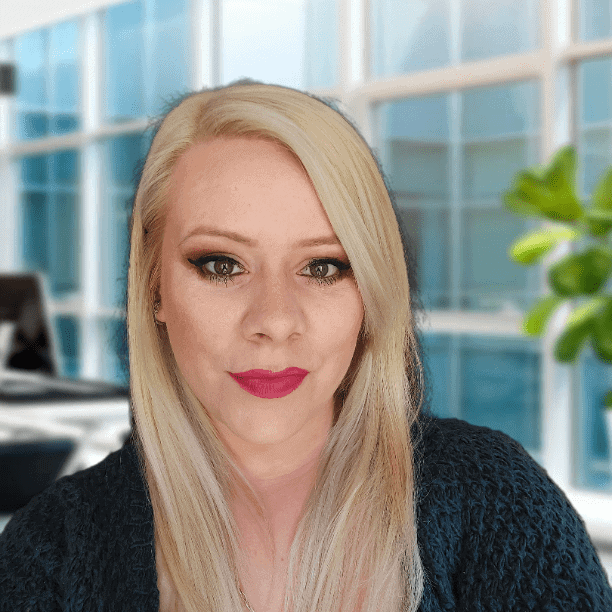
In a world where personal and professional challenges often intertwine, finding a guide who truly understands the complexities of life is invaluable. Enter Adair Good, the driving force behind Adair Good Coaching. With a rich and varied global career that spans continents and industries, Adair has dedicated her life to helping individuals and businesses thrive. From her early days in Hong Kong, where she led leadership and coaching workshops, to her current practice in New Zealand, Adair’s journey is one of constant evolution and unwavering commitment to personal development. Adair’s unique blend of life, career, and business coaching, combined with her expertise in Rapid Transformational Therapy (RTT), sets her apart in the world of personal and professional development. Her empathetic approach is rooted in her own experiences as a mature woman who has faced job loss, illness, grief, and other life-changing events. This deep understanding fuels her passion for helping others overcome their struggles and achieve their full potential. Join Mystic Mag as we delve into the inspiring story of Adair Good, and discover how her innovative approach to coaching and therapy is transforming lives, careers, and communities.
You made a significant shift in 2020 by incorporating Rapid Transformational Therapy (RTT) into your services. Can you share what motivated this decision and how RTT complements your existing coaching practices?
Back in 2020, I was working full-time as a business coach and managing a busy coaching practice. I found that through a downturn in the economy during the pandemic, a lot of my clients couldn’t afford to keep coaching with me at the time. So, I had to think about how to pivot my business and still do what I love in the personal development space.
I looked for something to complement my coaching business, and provide something meaningful and transformational to my existing and new clients. I discovered RTT (Rapid Transformational Therapy). A combined therapy method using Clinical hypnotherapy and 3 other well known therapies. I thought it fitted really well with coaching because it works with the subconscious mind. Often, in coaching, people face blocks that slow progress, and a faster way to break through those blocks can be to use therapy techniques.
I trained and got qualified in RTT, which took about seven months of online modular training with virtual classrooms. This format allowed me to meet other learners from around the world, which was enjoyable. By the end of the training, I had a new tool for my toolbox. I then pivoted my business to offer therapy as a clinical hypnotherapist in addition to coaching.
This pivot started to take off. When we emerged from lockdown and coaching demand returned, I offered both services. I provided therapy as a standalone service or combined it with coaching programs. Organizations also started incorporating my therapy services once they learned I offered them. With my corporate background, it was easy to work with team managers to improve theirs and their team’s performance, not just from a performance standpoint but also by addressing blocks to their personal and professional development.
I worked with team managers on high-stress areas like sales and burnout, adding therapy as a tool to help their teams perform better. This unique combination of therapy and coaching became a valuable asset. Therapy addresses the past and resolves past issues, while coaching focuses on the present and future goals. Effective coaching requires resolving past issues and removing any blocks to enable clients to move forward and improve their self belief and their overall performance.
As a Clinical Hypnotherapist and RTT Practitioner, you help individuals let go of past issues. Could you describe a particularly transformative success story that stands out in your mind?
I had a client that was 31, a married man obsessed with his health. He was constantly going to the doctor thinking that something was wrong with him, even though nothing was diagnosed. He was a fit, healthy, vibrant man. However, when COVID hit, his obsession worsened. He became more focused on the belief that he would die early. He had this belief and developed anxiety around his health. I suggested that RTT (Rapid Transformational Therapy) could really help because we needed to go back and find out the root cause of the beliefs. It is unusual to have this type of anxiety, especially at 31.
During the regression part of the hypnotherapy, we discovered that he lost his mother when he was very young. He was only four and a half years old when his mother died of a condition, and he saw her pass away in front of him. This was very traumatic for a child. He didn’t consciously realize this, but under hypnosis, he remembered his aunt telling him that he could have inherited his mother’s condition. This led him to believe that he would inherit the disease and die early. From that moment, he became obsessed with the idea that he was unwell, despite being generally healthy.
The combination of grief and what he experienced as a child created a belief that seemed to be consuming him. As we know, the subconscious mind can greatly influence our reality. During hypnotherapy, he not only recognized this belief but also understood its impact. As a Clinical hypnotherapist, I worked like a detective to figure out the impact of these beliefs. His fear of dying early and health anxiety were starting to affect his marriage. He and his wife were thinking about having children, but he was not keen because he couldn’t see himself living long enough to be a proper father.
He listened to a hypnotherapy recording I made based on a new set of beliefs that he wanted to have, for 21 days. The recording focused on life without the problem, which in his case was the fear of dying and health anxiety. It helped him envision what his life would be like without these fears. He started thinking about having kids, moving cities, becoming a leader at work, and other future plans. This approach didn’t address the problem directly but instead focused on what life could look like without it. This way he focuses on the present and the future and puts the past in the past.
In the hypnotherapy process, we work like surgeons, removing old beliefs and installing new ones in the subconscious mind. To embed these new beliefs, clients listen to a recording for 21 days, which is the cognitive brain therapy part of the process. After that, I use visualization techniques from NLP (Neuro-Linguistic Programming) to help clients visualize their future, eliminating any remaining limiting beliefs. This completes what I call the “therapy sandwich” – addressing the past, present, and future.
As a result, my client improved significantly. He became more of a leader at work, survived a redundancy and a restructure, and performed well. The uncertainty in his workplace had compounded his anxiety, but he managed to overcome it. His relationship with his wife also improved, and I have since helped her with some issues. Now, they are planning to have a family, move cities, and build a life that will be very fulfilling for the entire family.
His doctor even laughed when he visited, telling him that he wasn’t actually sick. Part of the therapy involved instructing him to visit the doctor only if a symptom persisted for at least three weeks. This stopped him from being paranoid about his health.
What type of services do you offer?
I offer services to address various conditions such as low self-esteem, low confidence, anxiety, depression, pain, trauma, PTSD, fears and phobias, addictions, and limiting beliefs. All of these can be helped with this type of therapy.
Then there’s the coaching aspect, which focuses on career transitions, personal development, leadership skills, executive coaching, and team coaching. I usually work individually, although I have led workshops and provided business coaching to help business owners reach their potential and run their businesses effectively. I’ve been a business owner since 2005 when I started my first business.
In addition to therapy and coaching, I sometimes develop learning and development programs for organizations. This stems from my previous experience in corporate learning, development, and training. If an organization requests a half-day workshop or similar, I can design and provide it. I have done this for various sectors, including supervision in different schools, helping people improve their workplace skills.
Currently, my business primarily focuses on RTT and coaching. I am working with two organizations, coaching entire teams by working individually with each member. During the coaching process, or sometimes beforehand, they have also undergone therapy. As a result, the organizations are seeing significant improvements in personal and professional performance, which is great.
You emphasize empathy in your practice, drawing on your own life experiences. How do you balance personal empathy with professional objectivity when working with clients?
I see empathy as more than just being sympathetic. While sympathy involves feeling sorry for someone, empathy involves wanting to help them make a change. I see myself as a facilitator of change in people. Some people want to go through change faster than others, and some move more slowly. Change is all about acceptance—accepting how things are and seeing how they can be. If you accept things as they are, you can move on.
I believe in being empathetic to a point, but not allowing someone to stay stuck in their story. Acknowledging the past is important, but it’s equally important to live in the now and envision a bright future. It’s about being empathetic but also pragmatic. As a practical person, I focus on what practical changes can be made right now to improve the situation.
Some people don’t like hearing the pragmatic side of things, but to me, it’s about facing up to what needs to be done to make the necessary changes for a better life. I don’t want people to remain victims; I want them to be survivors. We’re all survivors of something—grief, loss, redundancy, serious illness. I’ve faced all these challenges, and I’m still here, healthier and more resilient than ever. It can be done, but it requires resilience and the ability to bounce back.
It’s crucial to feel our feelings. Many people who come to me haven’t allowed themselves to feel their emotions. They’ll say they feel numb, which isn’t good. It’s important to sit with your feelings, but then you must make a plan to change things. Just feeling sorry for yourself won’t resolve anything.
In your view, what are the most critical skills or attributes that someone needs to successfully navigate a career transition or personal development journey?
First of all, they need to be ready to reach out to someone for help, whether it’s for career transition or personal development. Most people don’t know what to do differently because they’ve been doing the same thing their whole life. They need a therapist, coach, mentor, or someone to help them make good choices about change.
In career transition, it’s about exploring the available opportunities, considering retraining or changing studies, and knowing what the end goal looks like. What type of role do you want? Do you want to work for yourself or for someone else? What would that look like? I use my “What If” theory, where people aren’t allowed to say no to the question, “What if you had a different career? What would that look like for you?” This helps them think about opportunities rather than feeling stuck.
When considering transition, it’s important to brainstorm all the things you enjoy doing and where you could enjoy doing them. What sort of organization and people do you want to work with? If you run a business, then it might be “who is your ideal client”?
I’ve done a lot of career coaching throughout my career, from supervising people when I was young to project managing as a training manager. Everyone has similar aspirations—they want to move up or across an organization, pivot to something different, or run their own business. I help them plan the steps needed to get there. Planning is a crucial skill for creating transition. You must plan the steps and know what the end result is.
Many young people start university without knowing why they’re doing a degree. They think it might be useful, like studying law, but they need to consider what they want to do with it. Do they want to be a criminal lawyer, a family lawyer, or something else? There must be an end goal to avoid drifting aimlessly.
In terms of personal development, you need to accept that change is necessary and understand what you want to change about yourself. For instance, if you have low self-esteem, you need to figure out how to improve it, which might involve therapy. If you need to learn new skills, find out where to learn them. For attributes like public speaking, find a relevant course. YouTube is full of learning resources that are very helpful in learning a new skill or upgrading existing skills.
I had to learn how to record therapy sessions, convert files, and improve sound quality. I found tutorials on YouTube and taught myself. Learning these skills has become second nature through practice. We are capable of much more than we think.
On my website, I emphasize transforming lives because that’s what I do. I help people reach their potential by facilitating the changes they need. It’s a pragmatic approach to facilitating change.



